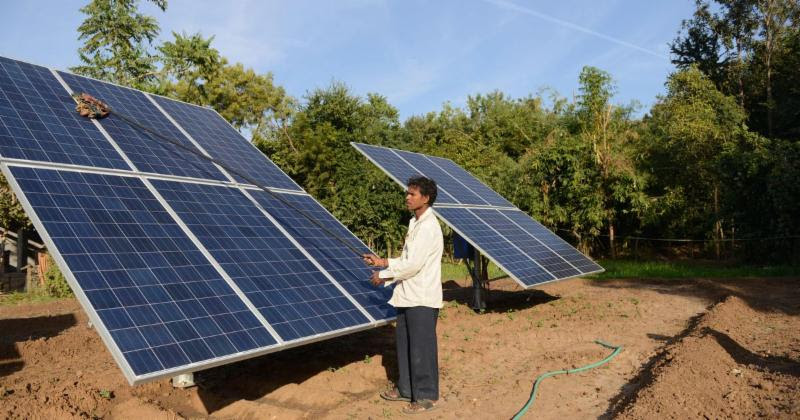In the first quarter of 2019, solar installation in India rose by 4% compared to the last quarter of 2018, but dropped by a massive 49% compared to the first quarter in 2018. 800MW of solar auctions were scrapped in the first quarter in 2019, because developers refused to offer lower tariffs. As rooftop installations fell by 33%, India has so far managed only 9GW of its rooftop solar target of 40GW by 2022.
Despite the lack of progress with rooftop solar installations, the government has remained bullish with Union power minister RK Singh asserting that India is on its way to achieving its aim of installing 175 GW of renewable energy by 2022. Elsewhere, India’s solar manufacturing industry is also expected to be hit by the 25% tariff on Indian solar exports to the US, which came into effect on June 5, 2019.
Renewables costs continue to tumble
The ‘Renewable Power Generation Costs in 2018’ report prepared by the International Renewable Energy Agency (IRENA) shows that renewable energy costs have fallen consistently and are increasingly becoming commercially competitive to fossil fuels. Costs from all commercially available renewable power generation technologies declined in 2018. The global weighted-average cost of electricity declined 26% year-on-year for concentrated solar power (CSP), followed by bioenergy (-14%), solar photovoltaic (PV) and onshore wind (both -13%) and hydropower (-12%).
The report also found that utility scale solar installations cost the least in India compared to other countries surveyed. Between 2010 and 2018, installation costs of solar projects dropped by an astounding 80% in the country. As costs decline, industry transition to renewables, particularly solar, is showing indications of picking up. Last week, Maruti Suzuki, India’s largest carmaker, announced that it will use solar power to manufacture cars from the current fiscal year.
India mulling to merge renewables and power ministries
India may merge the two separate ministries of renewables and thermal power. Power minister RK Singh says the proposal has been sent to the government. Will a single ministry control all sources of energy and streamline operations? Officials say consumers sometimes don’t know whether a distribution company is supplying renewable or thermal power to them. A merger will also help strike a balance between renewables and conventional power generators, who share common transmission lines. Experts also say the renewables ministry on its own has less control over issues such as payment delays by distribution companies.
More solar pumps for drought-hit farmers a bad idea, says CSE survey
Drought-hit Maharashtra is set to provide solar pumps to farmers. Of nearly 40,000 applicants, 3,900 farmers will get a 3HP pump for Rs16,560, 10% of the actual cost. A CSE survey says the solar pump scheme is not working in Maharashtra. In fact, it is ruining the area’s stressed water table. The pumps are grossly underutilised because of falling water levels and irrigation hours have actually decreased after the use of solar pumps, the survey said.
About The Author
You may also like
PMSGY Drives Rooftop Solar Expansion, But Challenges Remain: Report
Global Renewable Energy Capacity to Double by 2030, Led by Solar PV: Report
Investing in solar, storage can save Thailand close to $2 billion: Report
Renewables trump fossil fuels in efficiency, cost, environmental factors: Report
China’s Overseas Clean Tech Manufacturing Investments Surged 80% Since 2022: Report

